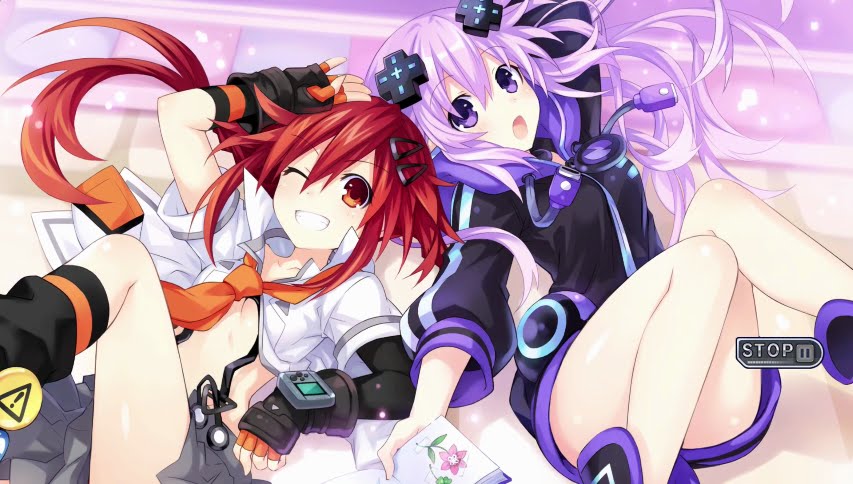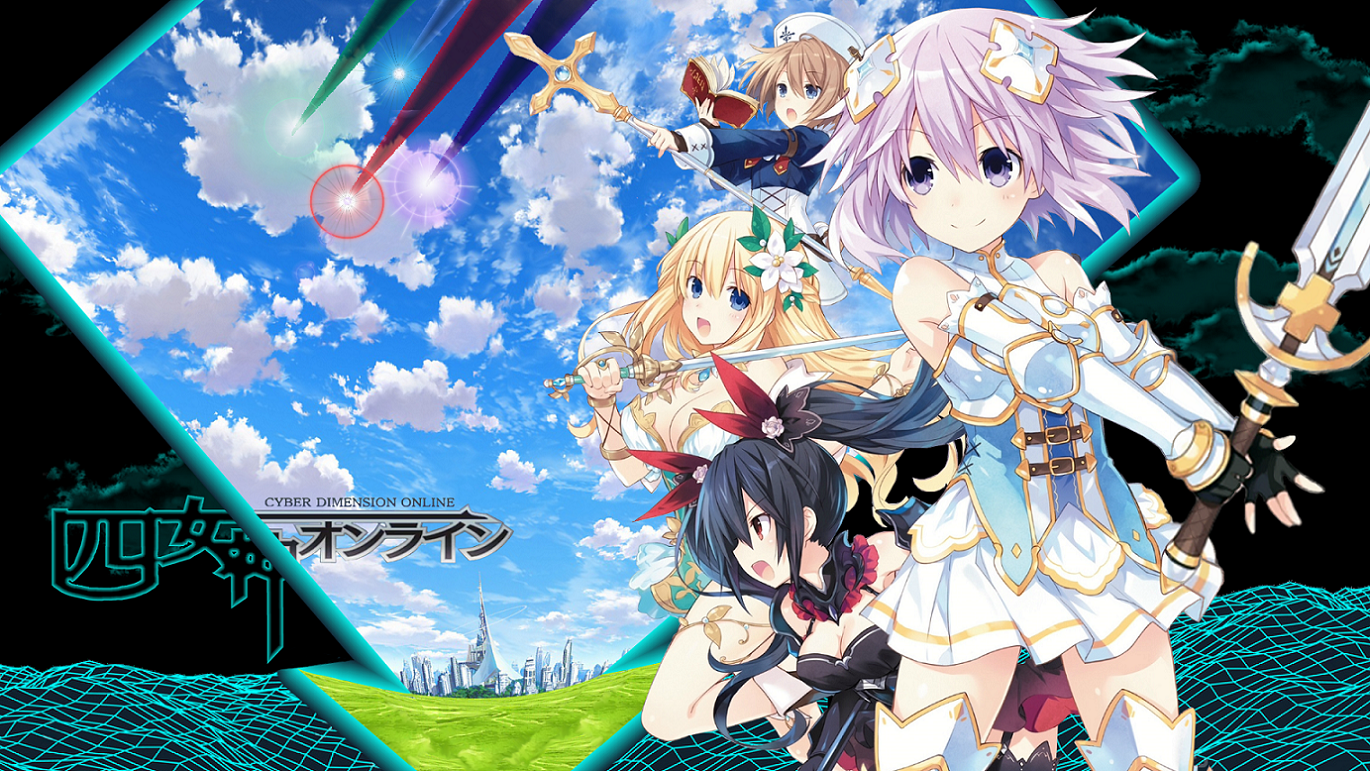“Dreams are Born from Chaos”, Megadimension Neptunia VII Story Review
To us fans of the video game medium, 2017 is beating down our doors with release after release. One of these highly anticipated games is known as Four Goddesses Online: Cyberdimension Neptunia. I’ve already covered this one in a past blog, when I went over my personal spotlights for 2017. Thinking about this future release in particular, I thought about giving my personal thoughts on a game designed and developed in a similar vein. The title I am referring to is Megadimension Neptunia VII developed for the PlayStation 4 as a continuation of the collaboration between Idea Factory and Compile Heart.
MegaNep is the fourth installment in the Hyperdimension Neptunia main storyline, following the events of Hyperdimension Neptunia V (or its PSVita remake Hyperdimension Neptunia ReBirth 3). You play primarily as the CPUs of Gamindustri, personifications of famous video game consoles popular at the time of the first game ruling over their respective countries: Neptune, the primary protagonist based off of the SEGA Neptune; Noire, the bittersweet lonely princess based on the PlayStation 3; Vert, the voluptuous and flirtatious yet nerdy ruler designed after the Xbox 360; and Blanc, the studious but short-tempered short-stack representing the Nintendo Wii. Neptunia is a game series that relies heavily on the character dynamics and interactions, as well as the humor it brings. One of the franchises signature brands of humor is the characters’ ability to break the fourth wall, in fact, I don’t believe a fourth wall even exists for this one in particular. (I had a visual for this but this blog system sucks. Amino never gave me this kind of hassle).
The gameplay revolves around four-man turn-based battles in a typical RPG fashion. Each character has a selective moveset and combo customization, with stats varying between each character, as well as weapons. These differences range from the slow but heavy-hitting Blanc to the flashy quick-draw Uni. Every girl the player controls also has a special arsenal of special attacks they can use to either make allies stronger, make enemies weaker, do a massive amount damage, or even heal. Certain characters with a close alliance can utilize their teamwork to use Couplink Skills and Formation Skills, which use up a gauge called the EXE Gauge. The EXE Gauge is filled through specific types of combos, which can then be used to perform an EXE Drive, to deal a mammoth sized amount of damage against strong foes (Ex. Icecalibur, Apocalypse Nova, and Bread Crumbs). A select few characters can access an ability called Hyper Drive Divinity (HDD) which strengthens them massively, changing their appearance drastically and sometimes even their personality. However, the gameplay can get repetitive at some points, especially for long, drawn out battles or enemies that are leagues weaker than you. Also, Formation Skills can be totally annoying considering how the characters have such a lower diameter in where they can move, you think they do no cardio at all. 
The game’s story is split into three separate games, Uzume’s presence dominating the first and third game. In Part 1 [Zerodimension Neptunia Z: Twilight of the Desperate CPU], you are introduced to a new CPU who joins the already enormous cast of cute and charming characters by the name of Uzume Tennouboushi, a self-proclaimed ruler of an apocalyptic landscape known as Zero Dimension with a design based on the SEGA Dreamcast. Normally she’s portrayed as a red-headed tomboy, but upon transformation becomes a bubbly citrus-flavored girly girl named Orange Heart. Because of this, she has earned the pet name of “Uzumoe”. The first story revolves around her and the world she must live in and protect, as well as the battle she must suffer through to the end after Neptune and her younger sister Nepgear are inadvertently warped to Zero Dimension. The three girls eventually then come across and older version of Neptune from a parallel version of the Nep Sisters’ home of Hyperdimension. Together the girls face off against an old enemy by the name of Arfoire, a purple hag who has been the bane of Gamindustri’s existence since the first game.

After that story arc, the player is then dunked into the second story arc: Hyperdimension Neptunia G: The Golden Leaders, Reconstruction of Gaminsutri. This story arc is focused around the four main CPUs trying to regain their political stance in their respective lands, while at the time trying to overtake the four girls who’ve replaced them by the name of Gold Third. Each member of Gold Third acts as a representation of four well known gaming companies: C-Sha representing Capcom (known for their Street Fighter and Megaman franchises), S-Sha as Square Enix (developer of the Final Fantasy series), B-Sha as Bandai Namco (famous for Pac-Man and games based on the Mobile Suit Gundam games), and K-Sha the personification of Konami (known for Dance Dance Revolution and Metal Gear Solid).
This storyline’s main villain is a power (and money) hungry armored general by the name of Affimojas, planning to exploit Gamindustri’s struggles to make profit. It’s also at this point of the game where the characters are introduced to a new way to power up mid-battle. This was also the main selling point of the game itself, powering up the CPUs into a form called NEXT Form, which harnesses both the prayers of their followers and the power of the Gold Third’s power sources, the Golden Summits.
Finally comes the third story arc, and the climax of the MegaNep trilogy: HeartDimension Neptunia H: Trilogy Finale: Into Legend. This story arc brings the game’s attention back to Uzume and Zero Dimension, and it’s at this point you are introduced to the ultimate villain of the game, an alternate version of Uzume, renamed Kurome Ankokuboshi, scorning the existence of the world due to its haste at forgetting and not forgiving her. The focus of the third arc is centered around Uzume and Kurome’s struggle for dominance, as Kurome tries to fuse the worlds of Zero Dimension and Hyperdimension, subsequently ruining them both.
Megadimension, like all of the Neptunia main games, has multiple endings that the player can achieve. In the normal ending, Uzume chooses to destroy the core at the center of Heart Dimension, which is tied to her very soul, which in turn will destroy both Heart Dimension and Zero Dimension. The game ends with Neptune and Nepgear looking out over their country of Planeptune thinking if Uzume had the same beautiful view. The story is incredibly complicated, but at least it doesn’t waste your time. And if you want to the relive the story again or just breeze by to get items you missed or anything, then you can achieve the true end to explore the world at your own discretion or start a New Game Plus, and do it all again, but with the items you’ve received, the characters you’ve unlocked, and the levels you’ve gained 
Overall, this is a good game, though it does make plenty of references back to past games, mostly the previous installment Victory, thus making the story somewhat complicated. Unfortunately, I’ve only played through Re;Birth 1 (the first game) prior to this, but I was able to piece them together smoothly enough with the context clues they gave me. The characters are quirky yet charming, bouncing off of each others’ flaws and strengths. The artwork displayed as game CGs is very well detailed and each characters portrayed in these CGs have an emotion or context that can be taken from them. The battle system (as tedious as it can be sometimes, thankfully you can skip animations) is smooth and well crafted over four games. I recommend this game strongly to those who are fans of anime-stylized JRPGS and cute yet dimensional characters to go along with it. I mean come on, if it weren’t they wouldn’t be fourteen games in (with number fifteen on the way later this year, which I most definitely will be buying)



